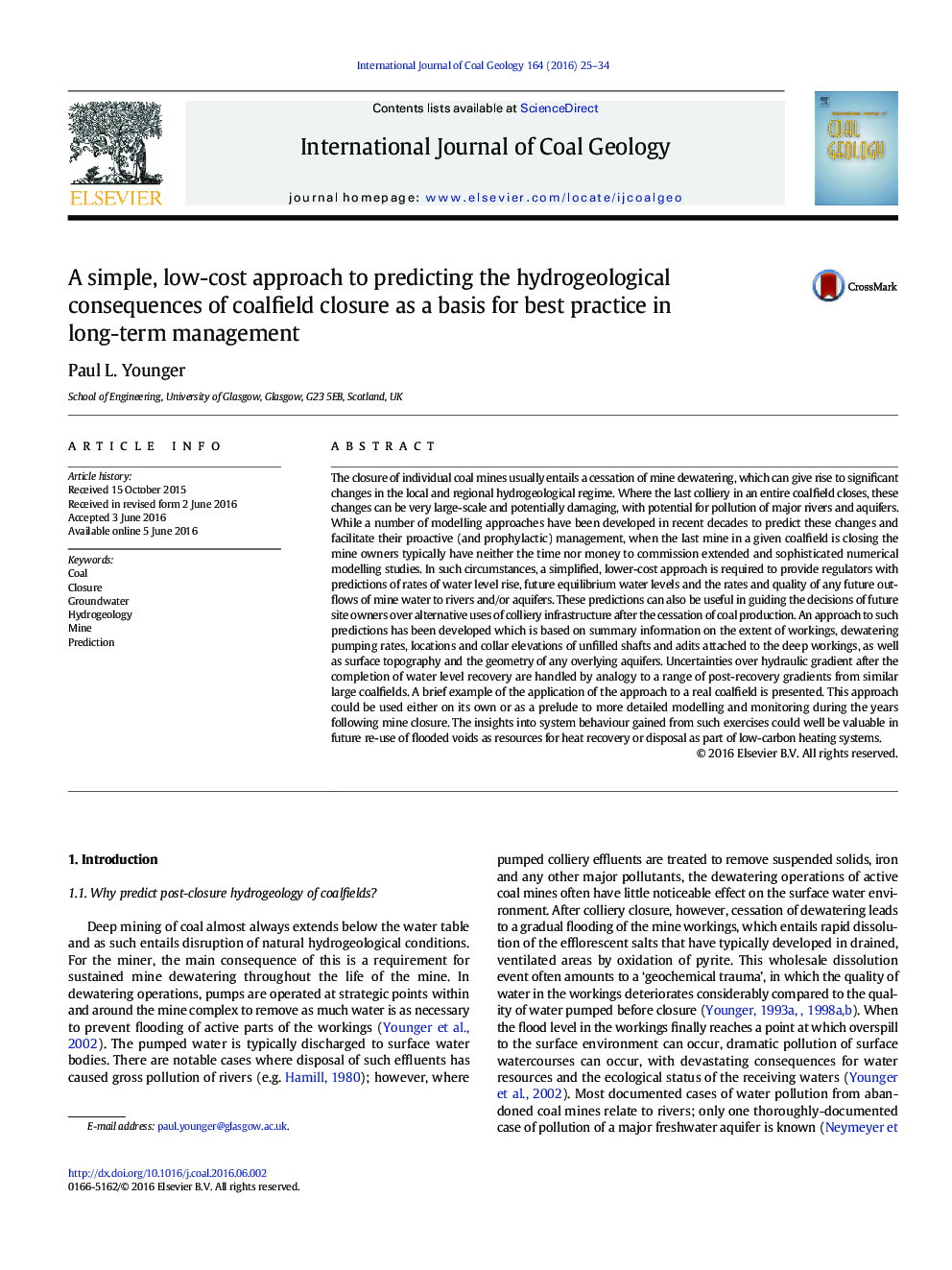| کد مقاله | کد نشریه | سال انتشار | مقاله انگلیسی | نسخه تمام متن |
|---|---|---|---|---|
| 5483674 | 1522539 | 2016 | 10 صفحه PDF | دانلود رایگان |
عنوان انگلیسی مقاله ISI
A simple, low-cost approach to predicting the hydrogeological consequences of coalfield closure as a basis for best practice in long-term management
ترجمه فارسی عنوان
یک رویکرد ساده و کم هزینه برای پیش بینی پیامدهای هیدروژئولوژیکی بستن زغال سنگ به عنوان مبنایی برای بهترین عمل در مدیریت بلند مدت
دانلود مقاله + سفارش ترجمه
دانلود مقاله ISI انگلیسی
رایگان برای ایرانیان
کلمات کلیدی
زغال سنگ، بسته، آب های زیرزمینی، هیدروژئولوژی، مال خودم، پیش بینی،
موضوعات مرتبط
مهندسی و علوم پایه
علوم زمین و سیارات
زمین شناسی اقتصادی
چکیده انگلیسی
The closure of individual coal mines usually entails a cessation of mine dewatering, which can give rise to significant changes in the local and regional hydrogeological regime. Where the last colliery in an entire coalfield closes, these changes can be very large-scale and potentially damaging, with potential for pollution of major rivers and aquifers. While a number of modelling approaches have been developed in recent decades to predict these changes and facilitate their proactive (and prophylactic) management, when the last mine in a given coalfield is closing the mine owners typically have neither the time nor money to commission extended and sophisticated numerical modelling studies. In such circumstances, a simplified, lower-cost approach is required to provide regulators with predictions of rates of water level rise, future equilibrium water levels and the rates and quality of any future outflows of mine water to rivers and/or aquifers. These predictions can also be useful in guiding the decisions of future site owners over alternative uses of colliery infrastructure after the cessation of coal production. An approach to such predictions has been developed which is based on summary information on the extent of workings, dewatering pumping rates, locations and collar elevations of unfilled shafts and adits attached to the deep workings, as well as surface topography and the geometry of any overlying aquifers. Uncertainties over hydraulic gradient after the completion of water level recovery are handled by analogy to a range of post-recovery gradients from similar large coalfields. A brief example of the application of the approach to a real coalfield is presented. This approach could be used either on its own or as a prelude to more detailed modelling and monitoring during the years following mine closure. The insights into system behaviour gained from such exercises could well be valuable in future re-use of flooded voids as resources for heat recovery or disposal as part of low-carbon heating systems.
ناشر
Database: Elsevier - ScienceDirect (ساینس دایرکت)
Journal: International Journal of Coal Geology - Volume 164, 1 July 2016, Pages 25-34
Journal: International Journal of Coal Geology - Volume 164, 1 July 2016, Pages 25-34
نویسندگان
Paul L. Younger,
